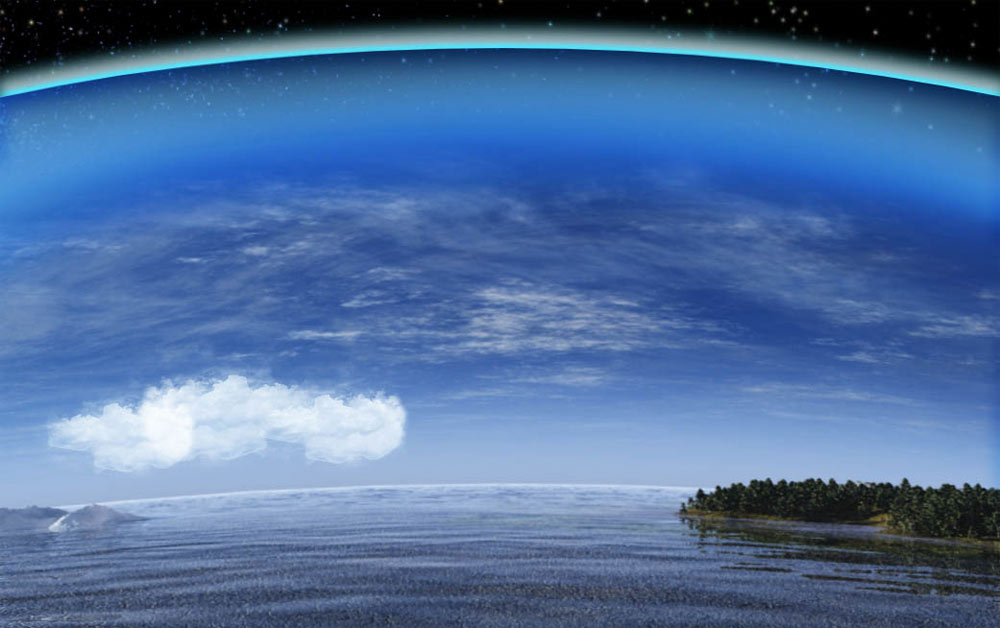Climate Change Debunked? Not So Fast

New research suggesting that cloud cover, not carbon dioxide, causes global warming is getting buzz in climate skeptic circles. But mainstream climate scientists dismissed the research as unrealistic and politically motivated.
"It is not newsworthy," Daniel Murphy, a National Oceanic and Atmospheric Administration (NOAA) cloud researcher, wrote in an email to LiveScience.
The study, published July 26 in the open-access online journal Remote Sensing, got public attention when a writer for The Heartland Institute, a libertarian think-tank that promotes climate change skepticism, wrote for Forbes magazine that the study disproved the global warming worries of climate change "alarmists." However, mainstream climate scientists say that the argument advanced in the paper is neither new nor correct. The paper's author, University of Alabama, Huntsville researcher Roy Spencer, is a climate change skeptic and controversial figure within the climate research community.
"He's taken an incorrect model, he's tweaked it to match observations, but the conclusions you get from that are not correct," Andrew Dessler, a professor of atmospheric sciences at Texas A&M University, said of Spencer's new study.
Cloud chaos
Spencer's research hinges on the role of clouds in climate change. Mainstream climate researchers agree that climate change happens when carbon dioxide traps heat from the sun in the atmosphere, much in the same way that a windshield traps solar heat in a car on a sunny afternoon. As the planet warms, a side effect is more water vapor in the atmosphere. This water vapor, known to most of us as clouds, traps more heat, creating a vicious loop. [Earth in Balance: 7 Crucial Tipping Points]
Spencer sees it differently. He thinks that the whole cycle starts with the clouds. In other words, random increases in cloud cover cause climate warming. The cloud changes are caused by "chaos in the climate system," Spencer told LiveScience.
Get the world’s most fascinating discoveries delivered straight to your inbox.
In the new paper, Spencer looked at satellite data from 2000 to 2010 to compare cloud cover and surface temperatures. Using a simple model, he linked the two, finding, he said, that clouds drive warming. His comparisons of his data with six Intergovernmental Panel on Climate Change (IPCC) models showed, he said, that the models are too sensitive (meaning some variables, such as warming, increase at the slightest change in other factors) and that carbon dioxide is not likely to cause much warming at all. [Image Gallery: Curious Clouds]
Disagreements
However, no climate scientist contacted by LiveScience agreed.
The study finds a mismatch between the month-to-month variations in temperature and cloud cover in models versus the real world over the past 10 years, said Gavin Schmidt, a NASA Goddard climatologist. "What this mismatch is due to — data processing, errors in the data or real problems in the models — is completely unclear."
Other researchers pointed to flaws in Spencer's paper, including an "unrealistic" model placing clouds as the driver of warming and a lack of information about the statistical significance of the observed temperature changes. Statistical significance is the likelihood of results being real, as opposed to chance fluctuations unrelated to the other variables in the experiment.
"I cannot believe it got published," said Kevin Trenberth, a senior scientist at the National Center for Atmospheric Research.
Several researchers expressed frustration that the study was attracting media attention.
"If you want to do a story then write one pointing to the ridiculousness of people jumping onto every random press release as if well-established science gets dismissed on a dime," Schmidt said. "Climate sensitivity is not constrained by the last two decades of imperfect satellite data, but rather the paleoclimate record."
Spencer agreed that his work could not disprove the existence of manmade global warming. But he dismissed research on the ancient climate, calling it a "gray science."
Politics and science
The science of Spencer's work proved inextricable from the political debate surrounding global warming. The paper was mostly unnoticed in the public sphere until the Forbes blogger declared it "extremely important."
Dessler, the A&M climatologist said that he doubted the research would shift the political debate around global warming.
"It makes the skeptics feel good, it irritates the mainstream climate science community, but by this point, the debate over climate policy has nothing to do with science," Dessler said. "It's essentially a debate over the role of government," surrounding issues of freedom versus regulation.
Spencer himself is up front about the politics surrounding his work. In July, he wrote on his blog that his job "has helped save our economy from the economic ravages of out-of-control environmental extremism," and said he viewed his role as protecting "the interests of the taxpayer." When asked why his work failed to gain mainstream acceptance, Spencer cited funding as a motivation for climate change researchers to find problems with the environment.
You can follow LiveScience senior writer Stephanie Pappas on Twitter @sipappas. Follow LiveScience for the latest in science news and discoveries on Twitter @livescience and on Facebook.

Stephanie Pappas is a contributing writer for Live Science, covering topics ranging from geoscience to archaeology to the human brain and behavior. She was previously a senior writer for Live Science but is now a freelancer based in Denver, Colorado, and regularly contributes to Scientific American and The Monitor, the monthly magazine of the American Psychological Association. Stephanie received a bachelor's degree in psychology from the University of South Carolina and a graduate certificate in science communication from the University of California, Santa Cruz.


